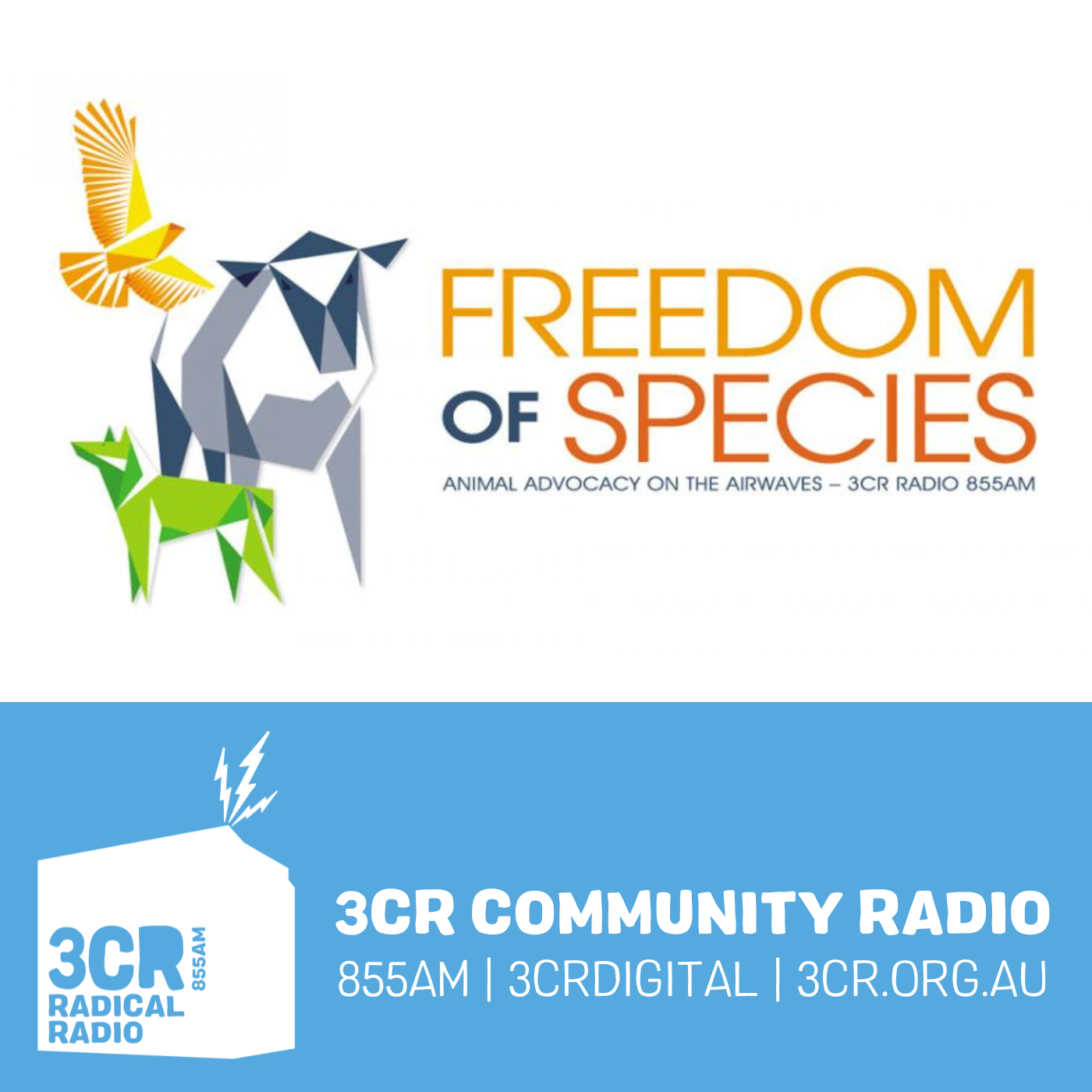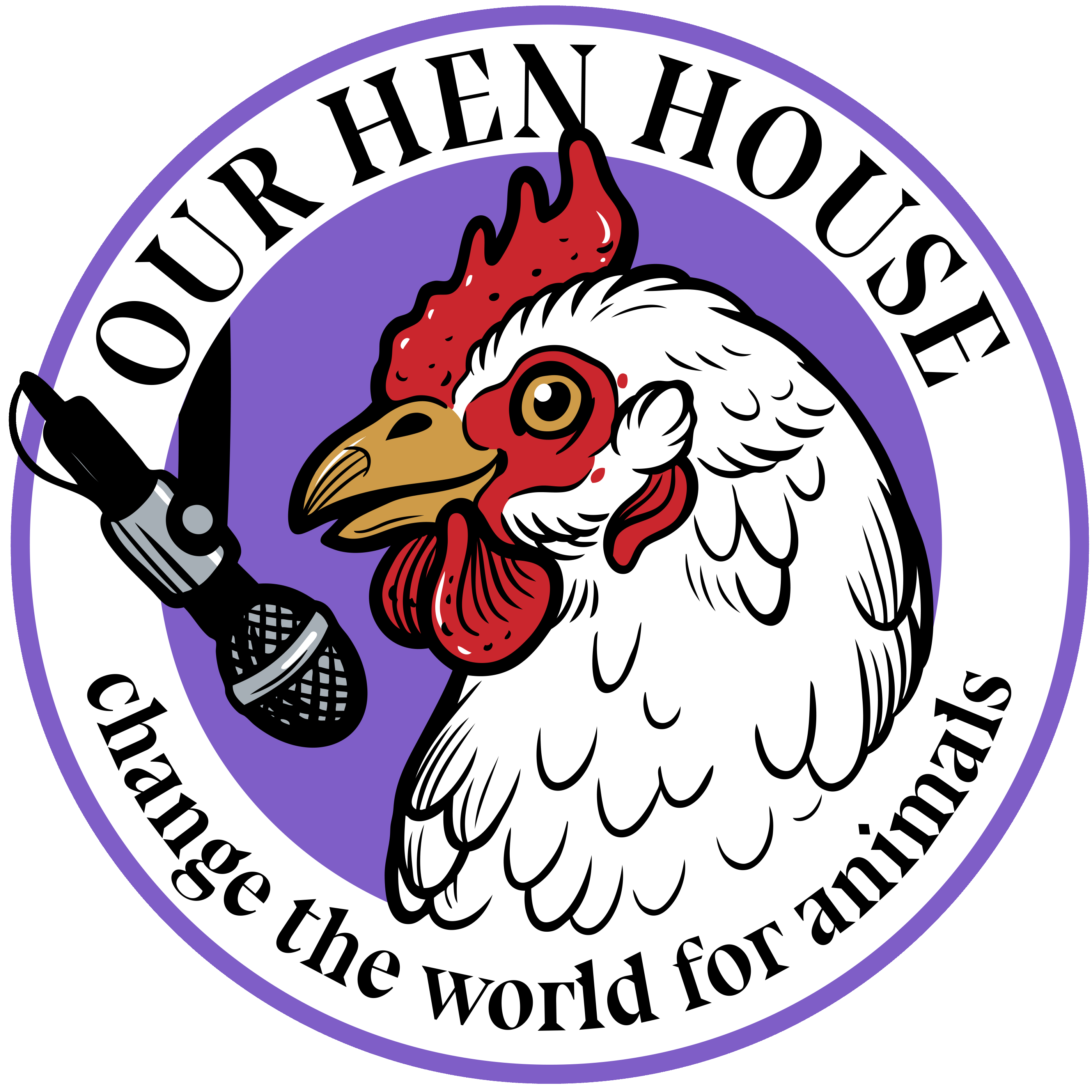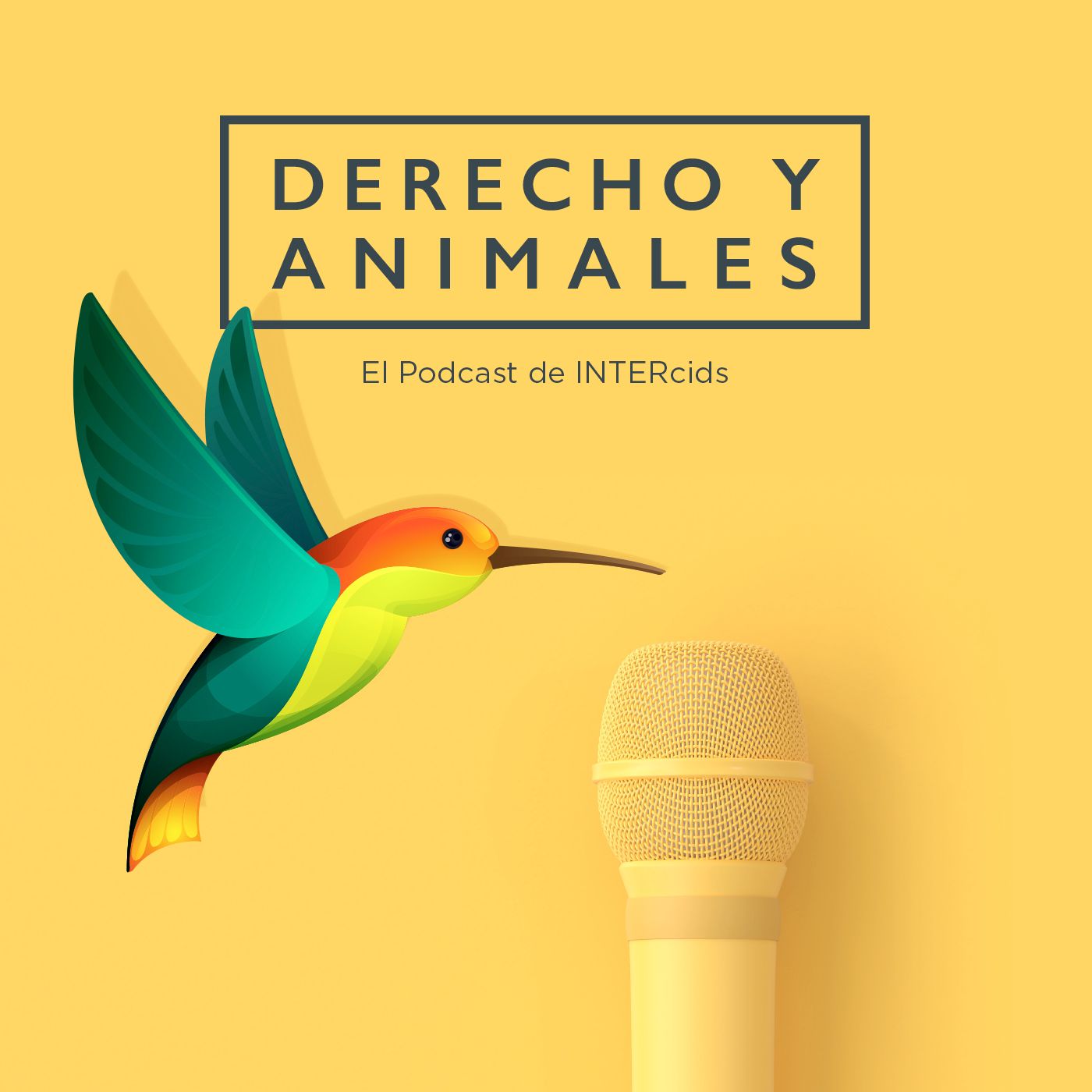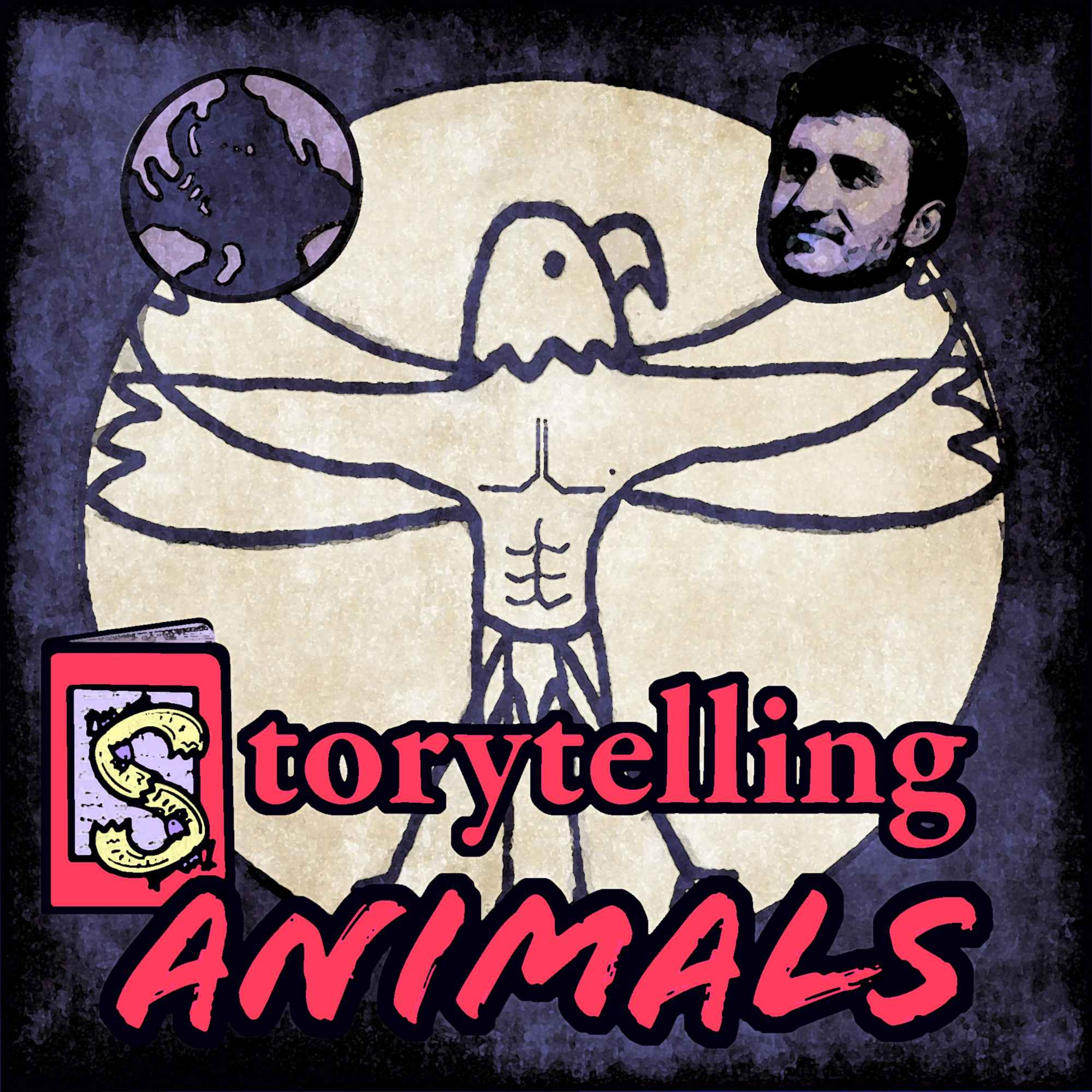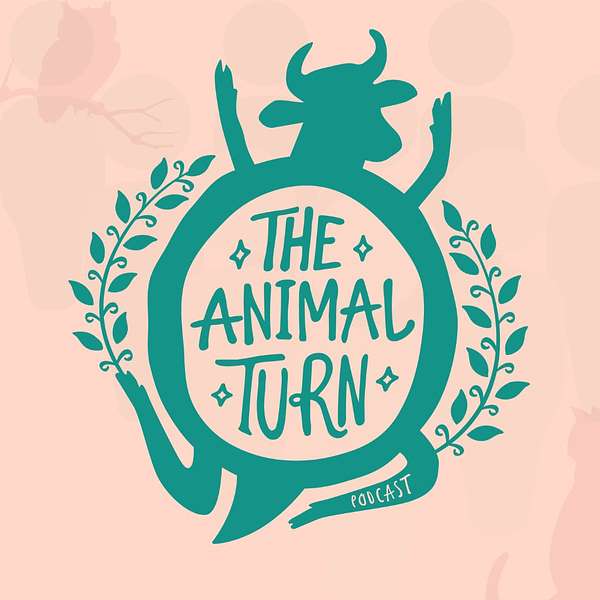
The Animal Turn
Animals are increasingly at the forefront of research questions – Not as shadows to human stories, or as beings we want to understand biologically, or for purely our benefit – but as beings who have histories, stories, and geographies of their own. Each season is set around themes with each episode unpacking a particular animal turn concept and its significance therein. Join Claudia Hirtenfelder as she delves into some of the most important ideas emerging out of this recent turn in scholarship, thinking, and being.
The Animal Turn
S6E7: Animal Photojournalism with Jo-Anne McArthur
Claudia talks to renowned photographer Jo-Anne McArthur about the power of images in political change for animals. They unpack what animal photojournalism is, some of the challenges photographers encounter in recording the lives of animals, and the political implications of such photos.
Date Recorded: 17 October 2023.
Jo-Anne McArthur is an award-winning photojournalist, sought-after speaker, photo editor, and the founder of We Animals Media. She has visited over sixty countries to document our complex relationship with animals. She is the author of three books: We Animals (2014), Captive (2017), and HIDDEN: Animals in the Anthropocene (2020), and is the subject of Canadian filmmaker Liz Marshall’s acclaimed Canadian documentary, The Ghosts in Our Machine. Jo-Anne’s photographs have received accolades from Wildlife Photographer of the Year, Nature Photographer of the Year, Big Picture, Picture of the Year International, the Global Peace Award, and others. Jo-Anne has been a visiting scholar at the University of British Columbia and Denver University, and in 2020, Jo-Anne was a jury member for World Press Photo. She hails from Toronto, Canada. Find out more about Jo-Anne on her website or connect with her on Twitter (@WeAnimals).
Featured:
- Hidden, Animals in the Anthropocene by We Animals Media
- It’s What I Do: A Photographer’s Life of Love and War by Lindsey Addario
- Every Twelve seconds: Industrialized Slaughter and the Politics of Sight by Timothy Pachirat.
- Maximum tolerated dose by Decipher Films
- Zebra Eye by Frans Lanting
- Jo-Anne’s striking images of minks.
- We Animals Media
- Aaron Gekoski
The Animal Turn is part of the iROAR, an Animals Podcasting Network and can also be found on A.P.P.L.E,
A.P.P.L.EAnimals in Politics, Law, and Ethics researches how we live in interspecies societies and polities.
Disclaimer: This post contains affiliate links. If you make a purchase, I may receive a commission at no extra cost to you.
The Animal Turn is hosted and produced by Claudia Hirtenfelder and is part of the iROAR Network. Learn more on our website.
- Leave a Review on Podchaser
- Check out The Animal Turn Merch.
- Support us on Patreon, Buy Me a Coffee, and Buzzsprout.
00:00 - Introduction
- Welcome back to “Animals and Politics”
- Jo-Anne McArthur is an award-winning photojournalist, sought-after speaker, photo editor, and the founder of We Animals Media. She has visited over sixty countries to document our complex relationship with animals. She is the author of three books: We Animals (2014), Captive (2017), and HIDDEN: Animals in the Anthropocene (2020), and is the subject of Canadian filmmaker Liz Marshall’s acclaimed Canadian documentary, The Ghosts in Our Machine. Jo-Anne’s photographs have received accolades from Wildlife Photographer of the Year, Nature Photographer of the Year, Big Picture, Picture of the Year International, the Global Peace Award, and others. Jo-Anne has been a visiting scholar at the University of British Columbia and Denver University, and in 2020, Jo-Anne was a jury member for World Press Photo. She hails from Toronto, Canada. Find out more about Jo-Anne on her website or connect with her on Twitter (@WeAnimals).
- Animal photojournalism an important part of political change for animals.
03:16 – A bit about Jo-Anne
- Moved by conflict photography, it can change minds and influence history.
- Being in the moment “satisfies your curiosity on a moment-by-moment basis” – Jo-Anne
- Photojournalism is satisfying personally and can create real world change.
- Studied photography and did some internships before breaking out on her own.
- We Animals Media is a business and international NGO in the service of animals.
06:50 – Animals in Photos
- When we think about photos of animals we often have tourism and conservation images in mind.
- National Geographic has taught us to welcome visuals of wild animals into our home, it’s not controversial.
- “There are a lot of animals who go completely unseen in the world, but we have a very close relationship with them, much closer than with the animals of the Savannah. They are the animals that we eat and the animals that we wear” – Jo-Anne
- Looking at the animals we use is much more difficult, these images are a mirror and ask questions of us.
09:57 – Violence in Images
- When it comes to war we often think of it as “over there” so that violence might not feel as confronting as violence seen in animal images.
- Conflict images are less personal than looking at animals we are directly causing suffering to.
- Getting people to look at these images is the challenge of animal photojournalism – how to get people to engage is a core question of activism.
- Need to be more curious and socially responsible to really “see” the subject matter.
- Some images can objectify animals and the violence done to them
13:40 – Personal and Contextual Framings
- Images at We Animals Media compel people to see specific animals and think about their lives.
- Animal Photojournalism tries to show the individual and the context as well
- Many images are historically not useful for animals but were for humans’ enjoyment.
- We Animals Media shows how animals live and die, including how they are transported, the temperatures they are exposed to
15:52 – Access
- Try to get access any way they can, often under cover and sneak in at night. These are dangerous and scary involving legal and financial risks.
- Go in and document things how they are and leave without a trace
- Spoke to Camille Labchuk about biosecurity and the way it is used to stop people gaining access to farm spaces.
- Now everyone who goes into farms wear bio-hazard suits.
- Ag-gag laws prevent photographers from taking pictures of some farms from the road with a long lens.
- Camille Labchuk and Siobhan O’Sullivan have both spoken about ag-gag law on the podcast
- A shout out to Siobhan O’Sullivan and her devotion.
- Systems are very similar across the world but some farming practices are more visible than others.
- Canada has some of the most antiquated welfare laws in the world.
- Access is greatly determined by policy.
- In some countries you are taking your life into your own hand by entering a farm, you could be killed for trespassing.
- Jo-Anne has been in dangerous situations, had to flee a country where it is illegal to go in as a journalist.
- It’s What I Do: A Photographer’s Life of Love and War by Lindsey Addario
- It takes a certain personality to do this work.
- Empathy, adventurous, dogged.
- Animal rights work is exhausting, and change is slow.
- There are a very few animal advocates, so they really need us to stay around.
23:13 – Journalist Integrity, Objectivity, and Intervention
- Some journalist rules need to change and broaden
- Gilles Peress photographing Darfur and re-positioned a skull which caused controversy.
- Carter’s photos and the cropping, powerful image
- The mantra of objectivity is a bit of an illusion
- Animal Photojournalism is about making changes for the animals who are in the frame.
- Photographed open rescues.
- Always look inside the dumpster when they leave, often there are living animals in there. You can liberate animals who are dying there. Hundreds of rabbits dying in clear plastic bags. Can be charged with trespassing and theft.
- The right to rescue and the right to save.
- Image of piglets in a dumpster on the website contrasted with clean cut images of meat in supermarkets you realise the extent of death is much greater.
- Images help to make connections.
- Narratives are important in telling a story so you need to think about how different images sit together.
- The piglets also face castration and have their heads smashed.
- Comparisons are really important, if we treated dogs the way we treat pigs we would go to jail.
34:40 – Political Tool for Advocacy
- These images are powerful and they are proof. We need this at a political and communication level.
- Animal Photojournalism furthers animal liberation, this is also why We Animals Media partners with advocates.
- Animal Photojournalism is exciting because you can help initiatives globally.
- Recently worked with Animal Justice in Canada with fur farms in Quebec. Made a campaign of them and within weeks one of the farms closed. Pressure and legal campaigns help.
- The images led to a criminal prosecution of a mink farmer.
- Mink were high in people’s imaginations because of COVID-19 – use the news and hot issues to see where images are needed.
- Put out a call to animal photojournalists t get images that are most useful at the time. Now have 110 contributing photographers.
- Photojournalists are a piece of the puzzle and can help bridge imaginative gaps.
- A film called “Maximum tolerated dose” and Jo-Anne was doing images about animals used in research. Photographed at three monkey breeding facilities done with a group in the UK who then presented it to CITES in Geneva. They were able to close down two of those three farms.
- Images facilitate change at national but also international laws and regulations.
- Photos help to make these stakes real.
42:25 – Professional, Impactful Images
- Better technology and vantage points allows for different kinds of engagement.
- “Get down and get close. Stay for a while” – Jo-Anne
- “Don’t just show the individual, show the system” – Jo-Anne.
- Gordon the man who was enslaved, image of his scarred back
- Famous images from the Vietnam War
- Zebra Eye by Frans Lanting in National Geographic had a massive impact on Jo-Anne
- We all know iconic images but it is something else to reflect on images have a massive impact on your life.
- Elephant face hacked off impacted Claudia, so too did the images from Aaron Gekoski with Orangutang in boxing gloves and monkeys riding tricycles.
- “Images are easy access” – Jo-Anne
- “Perhaps photojournalism is not dead at all but more important than ever” – Jo-Anne.
47:22 – Being an Animal Photojournalist ad Recording the Everyday
- Not all of this work involves going into restricted places, there are examples of animal use almost everywhere.
- Stories don’t have to be against people, we just haven’t been taught to think from animals’ perspectives.
- There are stories everywhere, they don’t have to be in dangerous or faraway place.
- We love animals yet we keep them in cages and tanks, need to be curious and engage in conversation.
- People’s homes are relatively invisible – Paula Arcari “The wallpaper of our lives”
- Documenting the boredom animals experience needs to be better documented.
- Shoot all the time and get your work reviewed.
- “Practice, practice, practice. You will never be a perfect photographer” – Jo-Anne
- It is depressing work but if you are using it for good it ca be satisfying.
- Being vegan contributes to helping animals.
53:49 – Quote
- Hidden, Animals in the Anthropocene by We Animals Media
- A historic book on how animals are treated.
- An image taken at a Thai slaughterhouse and a worker bringing a club down on a pig. An action shot, the ground is full of water and water is pulling away from the club. Not only an image about the pig but also about the workers.
- Shantideva – Indian philosopher and monk. Quote is from a long poem and it made sense for these wise words to accompany this image
- “May the frightened cease to be afraid and those bound be freed. May the powerless find power and may people think of benefitting each other. For as long as space remains, for as long as sentient beings remain, until then may I too remain to dispel the miseries of the world.”
58:25 – Politics of Sight
- Every Twelve seconds: Industrialized Slaughter and the Politics of Sight by Timothy Pachirat.
- Images should be nuanced.
- Images can influence and say something about consumer habits.
- Compare how space is used to hide and show animal abuse – slaughterhouses versus zoos
01:01:15 – What are you currently working on?
- We Animals Media is a resource, it is stock platform so you can find images you need there.
- We have a two-and-half-hour masterclass that you can also access online
- Support We Animals through donations.
- Always have assignments on the go.
- Sometimes NGOs pay for We Animals do work but We Animals also gets grants to do particular kinds of work.
- Most of the content is difficult and challenging but they also have images of changes, hope, and rescue.
- The Unbound Project with over 150 women.
- Working on stories of change and progress and focuses on all kinds of advocacy.
01:07:09 – The Animal Highlight (Minks)
- Jo-Anne has taken striking images of minks.
- Same family as otters and have the same grace and speed. The American and European mink, the European mink are endangered but the American mink I most found in fur farms.
- Wild mink always live close to water and follow water lines. They are excellent swimmers but are also at home on land.
- They are solitary animals and communicate mostly through scent.
- They vocalise and they can even purr like cats.
- On fur farms mink are kept in battery cages and this can lead to aggression.
- Image over 8 mink in one cage. The cage is too small for even one mink.
- The image captures the casual and brutal life of animals on fur farms.
- Jo-Anne’s images show the individuals and the violent structure.
- Mink often escape from fur farms, it is thought that most free-living mink in Denmark have escaped from fur farms.
- Fur farms also contaminate waterways.
01:15:23 - Credits
- Thank you to Animals in Philosophy, Politics, Law and Ethics (A.P.P.L.E) for sponsoring this podcast; Gordon Clarke (Instagram: @_con_sol_) for the bed music, Jeremy John for the logo, Virginia Thomas for the Animal Highlight, and Rebecca Shen for her design and social media work. This episode was edited by Christiaan Mentz and produced by the host Claudia Towne Hirtenfelder.
Show notes compiled by Claudia Hirtenfelder

.jpg)








